Meet Me in St. Louis (1944)
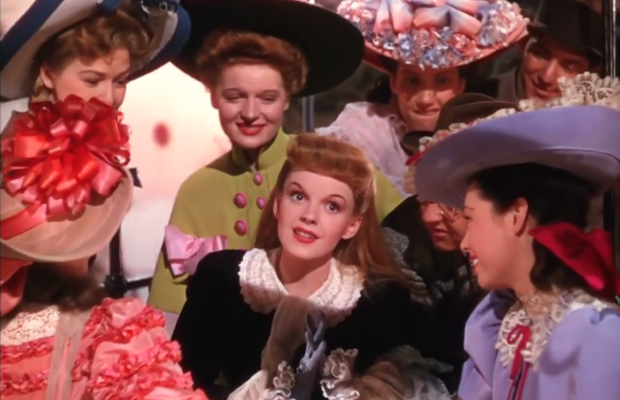
Toronto Film Society presented Meet Me in St. Louis (1944) on Monday, July 18, 1977 in a double bill with Dr. Rhythm as part of the Season 30 Summer Series, Programme 3.
Production Company: MGM. Producer: Arthur Freed. Director: Vincente Minelli. Screenplay: Irving Brecher, Fred F. Finklehoffe, based on The New Yorker stories and the novel by Sally Benson. Title Song: Andrew B. Sterling and Kerry Mills. New Songs: Hugh Martin and Ralph Blane: “The Boy Next Door, “The Trolly Song”, “Have Yourself a Merry Little Christmas”, “Skip to My Lou”. Dances: Paul Jones. Musical Adaptation: Roger Edens. Musical Director: Georgie Stoll. Orchestrations: Conrad Salinger. Film Editor: Albert Akst. Photography: George Folsey (Color by Technicolor). Dance Director: Charles Walters. Art Direction: Cedric Gibbons, Lemuel Ayers. Costumes: Irene Sharaff.
Cast: Judy Garland (Esther Smith), Margaret O’Brien (“Tootie” Smith), Mary Astor (Mrs. Anne Smith), Lucille Bremer (Ross Smith), June Lockhart (Lucille Ballard), Tom Drake (John Truett), Marjorie Main (Katie), Harry Davenport (Grandpa), Leon Ames (Mr. Alonzo Smith), Henry H. Daniels, Jr., (Lon Smith), Joan Carroll (Agnes Smith), Hugh Marlowe (Colonel Darly), Robert Sully (Warren Sheffield), Chill Wills (Mr. Neely), Donald Curtis (Doctor Terry), Mary Jo Ellis (Ida Boothby), Ken Wilson (Quentin), Darryl Hickman (Johnny Tevis), Leonard Walker (Conductor), Major Sam Harris (Mr. March).
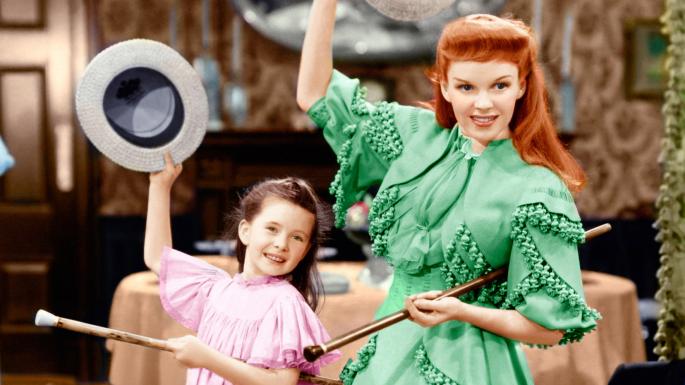
Meet Me in St. Louis is among the greatest of M-G-M musical, and one of the least typical. Emphasizing naturalism rather than artifice, it is a delicate period piece that reproduces beautifully the atmosphere of Midwestern bourgeois comfort a couple of years after the turn of the century. Based on The New Yorker memoirs of Sally Benson, the film is the essence of simplicity–a modest chain of related incidents broken up with musical interludes. Originally, the studio had wanted to use the title and setting as a pretext for an adventure story that would involve the heroine, Esther Smith, in a vapid blackmail plot. Arthur Freed and director Vincente Minnelli had a very different concept in mind and eventually they prevailed. A new screenplay was written, by Fred Finklehoffe and Irving Brecher, which counterpointed two simple stories–Esther’s romance with the boy next door and the Smith family’s reactions to the possibility of leaving St. Louis–the whole thing climaxing at the opening of the St. Louis World’s Fair, the Universal Exposition of 1904.
Rainbow by Christopher Finch, Grosset & Dunlap, 1975
I felt the whole picture should have the look of Thomas Eakins’s paintings, though not to the point of imitation. …The picture was divided into four season. I decided to introduce each segment of the film by using the Smiths’ American Gothic house at 5135 Kensington Avenue as a lovely filigreed illustration, like the greeting cards of that era. Each card would dissolve into the live action of the Smith family. …The picture was now ready for release. I felt it was quite good. The story had sentiment without stooping to sentimentality. It told of real people and had many subsidiary human touches: the crusty grandfather, the cook with the no-nonsense manner, the affectations of the oldest sister. One of the most personally enjoyable was the scene with the husband and wife singing. I didn’t want a pure singer’s voice for the Freed-Brown number, “You and I”. I asked Arthur [Freed] if he would dub the singing for Leon Ames. His sweet croak was perfect. He started to sing in too high a key, so he had to start all over again. Arthur loved doing the song. He also loved the picture. It was my coming of age. Mayer was overjoyed. The executives who’d been against it from the start admitted they were wrong. The reviews were ecstatic….
I Remember It Well by Vincente Minnelli, with Hector Arce, Doubleday, 1974

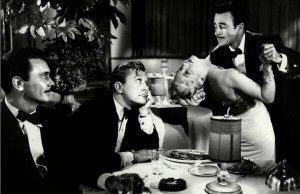
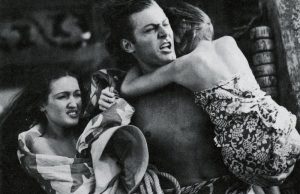
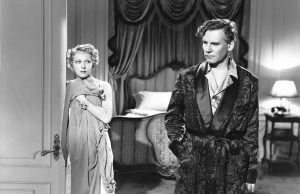






Leave a Reply